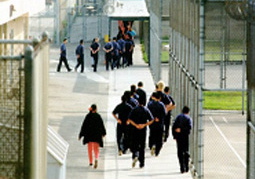
Although deterring juveniles from entering the juvenile justice system through prevention activities (such as diminishing risk factors and promoting protective factors) is preferable to punishing them, some juveniles will commit crimes, and some of those juveniles will commit serious and violent crimes for which they will be sentenced to out-of-home placement. The number of adjudicated cases resulting in out-of-home placement has increased in recent years, rising 51 percent nationally from 105,600 in 1987 to 159,400 in 1996 (MacKenzie, 1999). Most juveniles placed out of home will one day reenter the community. Thus, the juvenile justice system must address an important question: What should be done to prevent the recurrence of antisocial behavior when youthful offenders are released from out-of-home placement?
Does Juvenile Detention Work?
Most juvenile justice systems rely heavily on the use of restrictive out-of-home placement as a sanction for delinquent behavior. However, relying heavily on this restrictive activity has several negative consequences for a juvenile justice system. First, out-of-home placement is exceedingly expensive. Second, it increases the number of juveniles in institutions, which are already dangerously overcrowded. Third, it does little to correct delinquent behavior. Because youth are often released to disorganized communities, where it is easy to slip back into the habits that resulted in arrest in the first place, any gains made by juvenile offenders in correctional facilities may quickly evaporate following their release (Deschenes and Greenwood, 1998). In fact, a large percentage of serious juvenile offenders continues to commit crimes and reappear in the juvenile justice system (Krisberg, 1997). Although determining a specific figure is difficult, researchers estimate that the recidivism rate for untreated serious juvenile offenders is about 50 percent (Lipsey, 1999).2
What Will Work?
The ineffectiveness of restrictive practices has prompted juvenile justice practitioners and researchers to explore innovative, research-based programs that help recently released juveniles reenter the community. Researchers have hypothesized that providing transitional and reintegrative supervision and services to youthful offenders would reduce the high rate of recidivism among parolees. In turn, a reduction in recidivism would reduce overcrowding and the expenses associated with out-of-home placement. This hypothesis has helped to produce the concept of a comprehensive aftercare system.












